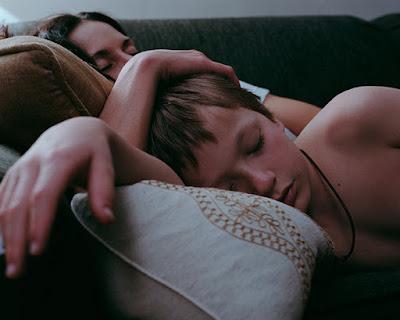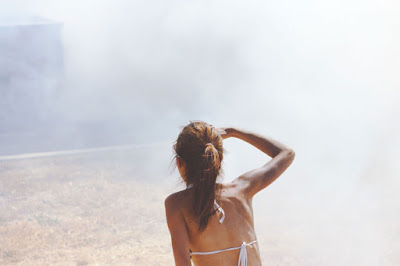Josh’s Quigley’s Untitled from his series A Shameless
Longing explores the ideas of intimacy in which there is a juxtaposition
between two types of photographs in the series: family photographs and stranger
photographs. Expectantly, his family photographs are more intimate because of
the personal connection and access to the subjects. On the other hand, the
stranger photographs are less intimate because of the lack of connection to the
subject. Although the stranger photographs may seem just as intimate, there is
not enough of a relationship in order to fulfill the narrative alone. Further,
he explores the suggestions of intimacy in the home and how the concept is
hidden from the world as if the world sees intimacy as inappropriate. Quigley
views the home as, “anonymous
dwellings are swallowed up by the surrounding landscape, their facades exposed
to the elements while protecting their inhabitants secrets. These inner
sanctums have become the last vestige, a respite from the gnawing public eye as
well as a physical shelter from the outside world. The homes are being
obliterated by the camera lens, by fire, or being taken over by nature and
shadow. There is the element of danger looming, its law of the jungle, survival
of the species. Inside the stage is set, and “we” the characters, uninhibited,
can act as we please. Sexuality abounds, depicting individuals, couples and
families in intimate and vulnerable moments. Outside of the public’s gaze,
guards are down, and traces of a primitive ancestry reveal themselves within
our domesticated caves”. Some scenes are more intimate including bedroom
scenes. Other images of the outside of homes are less intimate and more
observant. Some images include family scenes with children. Some even suggest
that the two varieties of photographs be their own separate projects but
Quigley was drawn to the juxtaposition. The series has been in the process or
years with no clear direction until after Quigley completed graduate school.
Now they are the version we know today as A Shameless Longing.





























